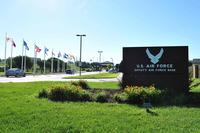News that DOD had chopped the Army’s Armed Reconnaissance Helicopter program sparked an interesting discussion in the comments section (both here and at sister site DefenseTech) about the reasons behind the cancellation, the larger issue of attack aviation in future wars and what the Army needs in any next-generation scout helicopter.
Readers agreed the ARH was killed due to a combination of “mission creep,” hanging everything possible on the Bell 407 civilian airframe so it could perform any and all combat missions. Poor program oversight at the PEO level that allowed per unit cost to climb more than $6 million was also clearly a factor. As the Pentagon’s chief weapons buyer, John Young, put it in a letter to Congress, the ARH management structure was "inadequate." The Army's plan to upgrade the Kiowa fleet, Young said, gives the military time to plan and execute a "disciplined" ARH replacement, and industry teams can recompete.
The ARH cancellation brought up the question of how attack aviation and current Army doctrine, which envisioned Apaches attacking deep against massed enemy armor formations, fits into the "contemporary operating environment" against a dispersed and adaptive enemy. In any discussion of that subject it’s evident that the Army still suffers a persistent hangover from the failed Apache deep attack operation near Karbala during the Iraq invasion in 2003.
The Army had amassed a massive fleet of Apaches in Kuwait prior to crossing the berm -- 151 AH-64A/Ds -- and there was enormous pressure from the service leadership to use them en masse, fitting the prevailing vision of deep battle. The 11th AHR night attack against the Republican Guard Medina division near Karbala was a total failure. No damage was done to the enemy division and every aircraft was hit by ground fire and one was shot down. A deep attack by the Apaches from the 101st a few days later fared little better, according to the Army’s official history On Point. Commanders quickly shifted the Apache mission to daylight reconnaissance and hovering "over the shoulder" of ground units that could protect them from ground fire.
One thing that struck me, from observations as an embedded reporter with the 3rd Infantry Division during the invasion, was the very different way 3-7 Cavalry used their Kiowas and the how the Apaches were employed by division and corps. During the drive to Baghdad, the Cav operated as a true combined arms mini-brigade, with an attached cannon battery and its own aviation element, the Kiowas. The Kiowas operated dispersed in pairs, in close coordination with troops on the ground, flying at tree top level, using buildings and terrain for cover.
Interestingly, the Apache units in OIF and OEF have since adopted the same tactics. I’ve been told that the Apaches are restricted to operating above friendly units, at least during daylight missions, because of ground fire danger. I also heard repeated complaints from soldiers in Iraq in 2005-2006 that the Apaches often refused to fly downrange against insurgents firing from constricted terrain.
As RAND analyst and outstanding military historian David Johnson points out in his book on the competing roles of airpower and ground power in the post war era, Learning Large Lessons, the Army developed the attack helicopter following the Korean war because Army officers doubted the Air Force’s commitment to providing close air support. The Army now has a thoroughly upgraded fleet of heavy attack helicopters, the Apache, that can perform the close air support mission. The Air Force has also done much over the past years to demonstrate their commitment to providing troops close air support.
The Army needs a replacement for the Kiowa. As Army operations director Lt. Gen. James Thurman put it, some sort of ARH remains a "critical requirement." But do we need more of a recon bird that can also carry lots of guns and rockets or a smaller recon airframe that’s also really good at quick insertion of troops, particularly in urban areas? To Brig. Gen. Ed Cardon, veteran of multiple Iraq tours and now deputy commander at the Army’s general staff college (and a rising star in the service), the asset he could have used most as a brigade commander in Baghdad was about a dozen of the Boeing AH-6 Little Birds to do quick insertions and raids over his sprawling AO. Kinetic options he had; more troop lift was what he needed.
In his letter to Congress, Young said, "Recent feedback from operational theaters has emphasized the capability benefits of a small, highly maneuverable helicopter to complement the Apache attack helicopters." After the rather public scolding Young delivered in his letter, it is highly doubtful Bell will be given another chance to deliver the next Army helicopter. He basically endorsed the Boeing Little Bird in his letter when he said "there is at least one alternative" that is equal to the Bell offering and at less cost. Given recent Pentagon acquisition history with trying to buy European, I’m pretty sure he’s not talking about the Eurocopter Tiger.
As a number of readers pointed out, between the Apaches and all of the new UAVs coming on line, the recon mission is being adequately filled. Perhaps a small lift bird better fits the bill.









